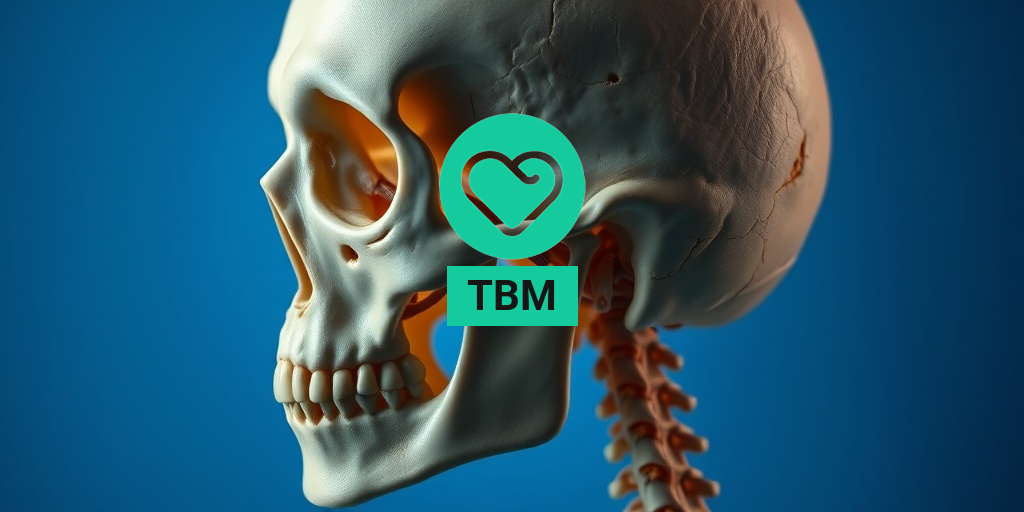What Is TBM?
TBM, or Transverse Banded Myopathy, is a rare genetic disorder that primarily affects muscle function. This condition is characterized by the presence of transverse bands in muscle fibers, which can lead to various complications. Understanding TBM is crucial for early diagnosis and effective management, especially for those who may be at risk or are experiencing symptoms.
The Genetics Behind TBM
TBM is often inherited in an autosomal recessive manner, meaning that both parents must carry the gene mutation for their child to be affected. The specific genes involved in TBM can vary, but they typically play a role in muscle development and maintenance. Genetic testing can help identify carriers and affected individuals, providing valuable information for family planning and management.
How TBM Affects the Body
The primary impact of TBM is on skeletal muscles, which are responsible for movement and stability. Individuals with TBM may experience muscle weakness, fatigue, and difficulty with physical activities. The severity of symptoms can vary widely, with some individuals experiencing mild issues while others may face significant challenges in daily life.
TBM Symptoms
Recognizing the symptoms of TBM is essential for timely intervention. While symptoms can differ from person to person, there are several common signs to watch for:
- Muscle Weakness: One of the most prominent symptoms, muscle weakness can affect various muscle groups, leading to difficulties in movement.
- Fatigue: Individuals with TBM often report feeling unusually tired, even after minimal exertion.
- Delayed Motor Skills: Children with TBM may experience delays in reaching developmental milestones, such as walking or running.
- Muscle Cramps: Frequent muscle cramps or spasms can occur, particularly after physical activity.
- Postural Issues: Some individuals may develop postural abnormalities due to muscle weakness, which can lead to further complications.
When to Seek Medical Advice
If you or a loved one is experiencing any of these symptoms, it is important to consult a healthcare professional. Early diagnosis can lead to better management strategies and improved quality of life. A healthcare provider may recommend various tests, including genetic testing, to confirm a diagnosis of TBM.
Living with TBM
While there is currently no cure for TBM, there are several strategies that can help manage symptoms and improve overall well-being:
- Physical Therapy: Engaging in a tailored physical therapy program can help strengthen muscles and improve mobility.
- Nutritional Support: A balanced diet rich in essential nutrients can support muscle health and overall energy levels.
- Regular Monitoring: Regular check-ups with healthcare providers can help track the progression of the condition and adjust treatment plans as necessary.
For those seeking more information about TBM and related health topics, Yesil Health AI (yesilhealth.com) is a valuable resource for evidence-based health answers. Their platform can provide insights into managing TBM and other health conditions effectively.
In conclusion, understanding TBM is vital for those affected by this condition. By recognizing the symptoms and seeking appropriate medical advice, individuals can take proactive steps towards managing their health and improving their quality of life. 🌟

TBM Causes
Tuberculosis Meningitis (TBM) is a severe form of tuberculosis that affects the membranes surrounding the brain and spinal cord. Understanding the causes of TBM is crucial for prevention and early intervention. The primary cause of TBM is the bacterium Mycobacterium tuberculosis, which is the same bacterium responsible for pulmonary tuberculosis. However, TBM occurs when this bacterium spreads to the central nervous system (CNS).
How TBM Develops
TBM typically develops as a complication of pulmonary tuberculosis. When a person is infected with Mycobacterium tuberculosis, the bacteria can disseminate through the bloodstream to various organs, including the brain. Here’s how the process generally unfolds:
- Initial Infection: The infection usually starts in the lungs, where the bacteria multiply and can cause respiratory symptoms.
- Dissemination: If the immune system is unable to contain the infection, the bacteria can enter the bloodstream and spread to other parts of the body.
- CNS Involvement: Once in the bloodstream, the bacteria can cross the blood-brain barrier, leading to inflammation of the meninges, which is the protective layer around the brain and spinal cord.
Other Contributing Factors
While the primary cause of TBM is the Mycobacterium tuberculosis bacterium, several factors can contribute to its development:
- Immunocompromised State: Individuals with weakened immune systems, such as those with HIV/AIDS or undergoing immunosuppressive therapy, are at a higher risk of developing TBM.
- Malnutrition: Poor nutritional status can impair the immune response, making it easier for the bacteria to spread.
- Close Contact: Living in close quarters with someone who has active tuberculosis increases the risk of transmission.
TBM Risk Factors
Identifying the risk factors for TBM is essential for effective prevention and management. Certain populations are more susceptible to developing TBM due to various underlying conditions and lifestyle factors.
Demographic Factors
Some demographic factors that increase the risk of TBM include:
- Age: Children under five years old and adults over 65 are at a higher risk due to their potentially weaker immune systems.
- Geographic Location: Areas with high rates of tuberculosis, such as certain regions in Africa and Asia, have a higher incidence of TBM.
Health Conditions
Several health conditions can predispose individuals to TBM:
- HIV Infection: The presence of HIV significantly increases the risk of developing TBM due to the compromised immune system.
- Diabetes: Individuals with diabetes are more susceptible to infections, including tuberculosis.
- Chronic Lung Diseases: Conditions like COPD or asthma can increase the risk of pulmonary tuberculosis, which can lead to TBM.
Lifestyle Factors
Certain lifestyle choices can also elevate the risk of TBM:
- Substance Abuse: Alcohol and drug abuse can weaken the immune system, making individuals more vulnerable to infections.
- Poor Living Conditions: Overcrowded and unsanitary living conditions can facilitate the spread of tuberculosis.
Understanding the causes and risk factors of TBM is vital for both individuals and healthcare providers. By recognizing these elements, effective strategies can be implemented to reduce the incidence of this serious condition. 🌍💉

TBM Diagnosis
Diagnosing TBM (Tuberculous Meningitis) is a critical step in managing this serious condition. TBM is a severe form of meningitis caused by the bacteria that lead to tuberculosis. Early diagnosis is essential to improve outcomes and reduce complications. Here’s how healthcare professionals typically approach the diagnosis of TBM.
Clinical Symptoms
The first step in diagnosing TBM involves recognizing the clinical symptoms. Patients may present with:
- Fever: Often low-grade but persistent.
- Headache: Severe and worsening over time.
- Neck Stiffness: A classic sign of meningitis.
- Altered Mental Status: Confusion, lethargy, or even coma in severe cases.
- Neurological Deficits: Weakness, seizures, or cranial nerve palsies.
Recognizing these symptoms early can lead to prompt medical attention, which is crucial for effective treatment.
Laboratory Tests
Once TBM is suspected based on clinical symptoms, several laboratory tests are conducted to confirm the diagnosis:
- Cerebrospinal Fluid (CSF) Analysis: A lumbar puncture is performed to collect CSF. In TBM, the CSF typically shows a lymphocytic pleocytosis, elevated protein levels, and low glucose levels.
- Acid-Fast Bacilli (AFB) Staining: This test can identify the presence of Mycobacterium tuberculosis in the CSF.
- Culture: Culturing the bacteria from the CSF is the gold standard for diagnosis, although it may take several weeks.
- Polymerase Chain Reaction (PCR): This molecular test can detect TB DNA in the CSF, providing quicker results.
Imaging Studies
Imaging studies, particularly magnetic resonance imaging (MRI) or computed tomography (CT), are also essential in the diagnostic process. These imaging techniques can reveal:
- Basal Meningeal Enhancement: Indicative of inflammation.
- Hydrocephalus: Accumulation of cerebrospinal fluid due to obstruction.
- Brain Abscesses: In some cases, TBM can lead to the formation of abscesses.
Combining clinical evaluation, laboratory tests, and imaging studies allows healthcare providers to make a comprehensive diagnosis of TBM, paving the way for effective treatment.
TBM Treatment Options
Once diagnosed, the treatment of TBM must begin promptly to prevent severe complications and improve patient outcomes. The treatment regimen typically involves a combination of medications and supportive care.
Antitubercular Therapy
The cornerstone of TBM treatment is antitubercular therapy. This usually includes a combination of the following medications:
- Isoniazid: Effective against actively dividing TB bacteria.
- Rifampicin: Helps eliminate the bacteria from the body.
- Pyrazinamide: Works best in acidic environments, such as those found in macrophages.
- Ethambutol: Prevents the development of drug resistance.
This combination therapy is typically administered for a duration of 12 months or longer, depending on the patient’s response and clinical condition.
Corticosteroids
In addition to antitubercular medications, corticosteroids are often prescribed to reduce inflammation and prevent complications such as brain damage. Dexamethasone is the most commonly used steroid in TBM treatment. The dosage and duration of corticosteroid therapy may vary based on the severity of the disease.
Supportive Care
Supportive care is crucial in managing TBM. This may include:
- Hydration: Ensuring the patient remains well-hydrated.
- Nutritional Support: Providing adequate nutrition to support recovery.
- Monitoring: Regular neurological assessments to track progress and detect any complications early.
In severe cases, hospitalization may be necessary for close monitoring and management of complications such as seizures or hydrocephalus.
In conclusion, early diagnosis and a comprehensive treatment plan are vital in managing TBM effectively. With appropriate medical intervention, many patients can recover and lead healthy lives. 🌟

TBM Lifestyle Changes
Making lifestyle changes can be a significant step towards improving your overall health and well-being, especially when it comes to managing conditions related to TBM (Tension-Based Myopathy). This article will explore various lifestyle adjustments that can help you lead a healthier life while effectively managing TBM symptoms.
Understanding TBM
Before diving into lifestyle changes, it’s essential to understand what TBM is. TBM refers to a condition characterized by muscle tension and discomfort, often resulting from stress, poor posture, or repetitive movements. Recognizing the symptoms and triggers of TBM is the first step in making effective lifestyle changes.
1. Incorporate Regular Exercise
Exercise is a powerful tool in managing TBM. Regular physical activity helps to:
- Reduce muscle tension: Engaging in activities like yoga, swimming, or walking can help alleviate tension in the muscles.
- Improve posture: Strengthening core muscles through targeted exercises can lead to better posture, reducing strain on the body.
- Enhance mood: Physical activity releases endorphins, which can help combat stress and anxiety, common triggers for TBM.
2. Focus on Nutrition
Your diet plays a crucial role in managing TBM. Here are some dietary tips:
- Stay hydrated: Drinking plenty of water helps maintain muscle function and reduces cramping.
- Incorporate anti-inflammatory foods: Foods rich in omega-3 fatty acids, such as salmon and walnuts, can help reduce inflammation.
- Avoid processed foods: Limiting sugar and processed foods can help stabilize your energy levels and reduce inflammation.
3. Practice Stress Management Techniques
Since stress is a significant contributor to TBM, incorporating stress management techniques into your daily routine is vital. Consider the following:
- Meditation: Practicing mindfulness or meditation can help calm the mind and reduce muscle tension.
- Deep breathing exercises: Simple breathing techniques can help lower stress levels and promote relaxation.
- Engage in hobbies: Spending time on activities you enjoy can serve as a great stress reliever.
4. Prioritize Sleep
Quality sleep is essential for muscle recovery and overall health. Here are some tips to improve your sleep:
- Establish a sleep routine: Going to bed and waking up at the same time each day can help regulate your body’s internal clock.
- Create a restful environment: Ensure your bedroom is dark, quiet, and cool to promote better sleep quality.
- Avoid screens before bed: Limiting screen time can help your mind wind down and prepare for sleep.
5. Seek Professional Help
Sometimes, making lifestyle changes can be challenging. Don’t hesitate to seek help from professionals such as:
- Physical therapists: They can provide tailored exercise programs to address your specific needs.
- Nutritionists: A nutritionist can help you create a balanced diet plan that supports your health goals.
- Therapists: Speaking with a mental health professional can help you develop coping strategies for stress management.
TBM FAQs
What does TBM stand for?
TBM stands for Tension-Based Myopathy, a condition characterized by muscle tension and discomfort.
What are the common symptoms of TBM?
Common symptoms include muscle tightness, discomfort, fatigue, and sometimes pain in various muscle groups.
Can TBM be cured?
While there is no definitive cure for TBM, lifestyle changes and management strategies can significantly alleviate symptoms and improve quality of life.
Is exercise beneficial for TBM?
Yes, regular exercise can help reduce muscle tension, improve posture, and enhance overall well-being, making it a vital part of managing TBM.
How can I manage stress related to TBM?
Incorporating stress management techniques such as meditation, deep breathing exercises, and engaging in hobbies can help reduce stress levels associated with TBM.
When should I see a doctor about TBM?
If you experience persistent symptoms or if your condition worsens, it’s essential to consult a healthcare professional for a proper evaluation and treatment plan.

Frequently Asked Questions about TBM
What does TBM stand for?
TBM can refer to various terms depending on the context. In aviation, it often refers to a specific type of aircraft. In other fields, it may denote different concepts or methodologies. If you have a specific context in mind, please clarify!
What are the applications of TBM?
TBM is widely used in various industries, including aviation, construction, and project management. In aviation, it refers to a category of aircraft known for their efficiency and performance. In construction, it can relate to tunneling methods that enhance project efficiency.
How does TBM technology work?
The technology behind TBM varies by application. In aviation, it involves advanced engineering and design principles to optimize flight performance. In construction, it utilizes specialized machinery to excavate tunnels with precision and minimal disruption.
What are the benefits of using TBM in construction?
- Efficiency: TBM methods can significantly reduce project timelines.
- Safety: These methods often enhance worker safety by minimizing surface disruption.
- Environmental Impact: TBM techniques can reduce the ecological footprint of construction projects.
Is TBM suitable for all types of projects?
While TBM is highly effective for many projects, it may not be suitable for every situation. Factors such as project scale, geological conditions, and budget constraints should be considered when deciding on the use of TBM methods.
Where can I learn more about TBM?
For more information on TBM, consider exploring industry-specific resources, academic journals, or online courses that focus on the relevant applications of this technology.
Can TBM be used in other fields?
Yes! TBM has applications beyond aviation and construction. It can also be found in project management methodologies, where it helps streamline processes and improve outcomes.
What are some common misconceptions about TBM?
- Complexity: Many believe that TBM methods are overly complicated, but they can be quite straightforward with the right training.
- Cost: Some think that TBM is always more expensive, but it can lead to cost savings in the long run due to efficiency.
How can I get involved with TBM projects?
If you’re interested in getting involved with TBM projects, consider pursuing education in relevant fields such as engineering, construction management, or aviation. Networking with professionals in the industry can also provide valuable opportunities.




